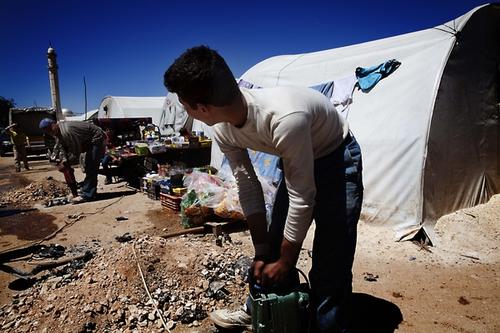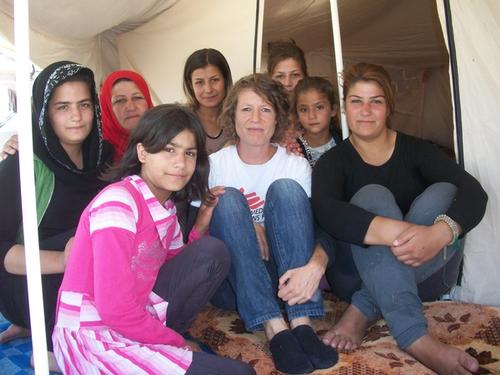The team working at one of MSF’s hospital in northern Syria has learned to adapt to a changing situation. As the front lines have moved further away, the influx of patients has decreased, but in the last months the number of burn victims has grown. During the winter, families relied on rudimentary stoves for heat. Domestic accidents occur frequently or gunfire causes panic. At those moments, the stove may explode or the fuel canister may catch on fire. “Burn patients arrive several times a week,” explains Dr. Anne-Marie Pegg, an MSF emergency physician. “Their faces and hands are always the most affected.”
When a major burn patient arrives in the emergency room, the first step is to treat the pain because the wounds are agonizing. The patient is then placed on a drip to replace lost fluids. The wounds and dead skin must also be cleaned, as they are a source of infection, and then bandaged. This can be done only in the operating room under anesthesia. The surgeon lays down sterile compresses coated with sulfadiazine, an anti-bacterial cream, so that the dressings can be changed every two or three days without tearing the skin.
The team’s physical therapist often participates in the procedure and may splint the knee, for example, so that it remains extended. That way, retraction will not occur as the skin scars, leading to loss of mobility that results when the affected part of the body heals in the wrong position. That’s what the team had to do in the case of a six-year old girl with burns across her knee. Another child was burned on the hands and face. “To treat the burns on the palm of the hand, I placed a little roll in the middle of the palm to maintain the functional position, which is necessary to carry out the activities of daily life,” explains Ricardo, MSF’s physical therapist.

Treating the face was more complicated. A thermoforming mask was required to prevent skin retraction during scarring and preserve facial features. “I covered the child’s face with sterile compresses and used a thermoforming plate to make a mold, emphasizing the injured areas. Then I made a plaster mask, which was my positive. I hollowed out the plaster around the eyelids, nostrils and the corners of the mouth.” The next step involved setting another thermoforming plate over the positive to obtain the mask, which was placed, in turn, over the face under anesthesia, of course.
The mask is then adjusted as the scarring process proceeds. “When the swelling lessens, you have to hollow out around the cheeks, dimples and the chin in order to reshape the facial features.”
Treating major burn patients also requires following very strict rules of hygiene as these patients are at great risk of infection. Their nutritional needs are also twice the normal amount. “Their diet must include a lot of protein,” Dr. Pegg says. “If the children want cake, we are happy to give it to them. They can eat everything they want. Eating properly is key to healing.”
But that’s not always enough. The surgeon may have to perform skin grafts and healing is a lengthy process. Even when a major burn patient leaves the hospital, he or she must return approximately every three days to have the dressings changed and for physical therapy.
But winter is coming to an end. The MSF team treated 85 major burn patients between January and March. And maybe that number will decline.





